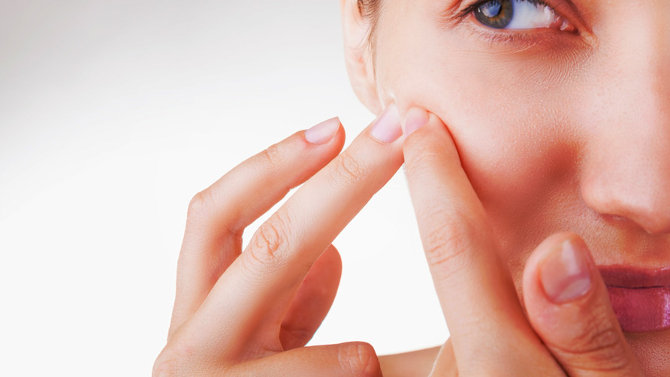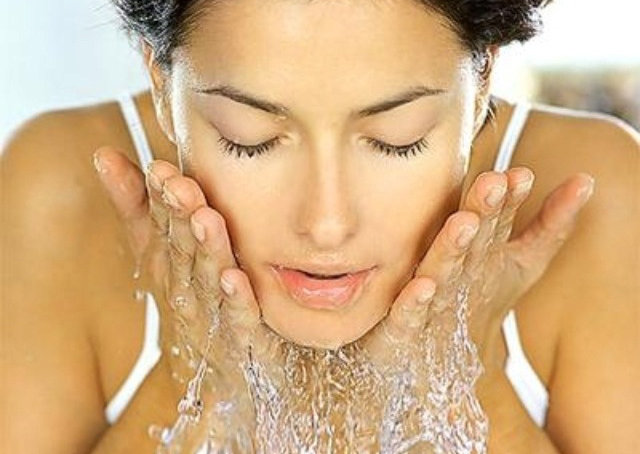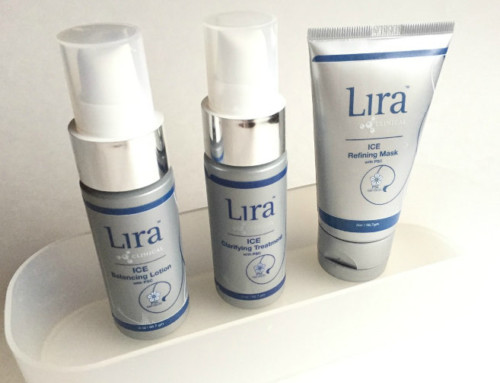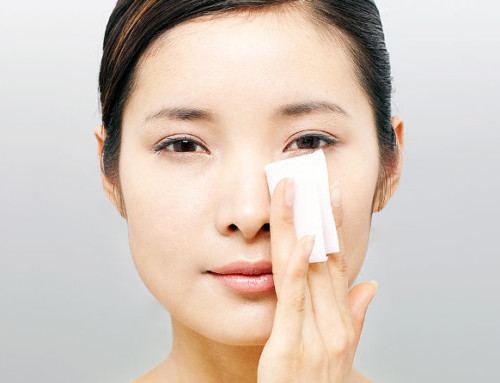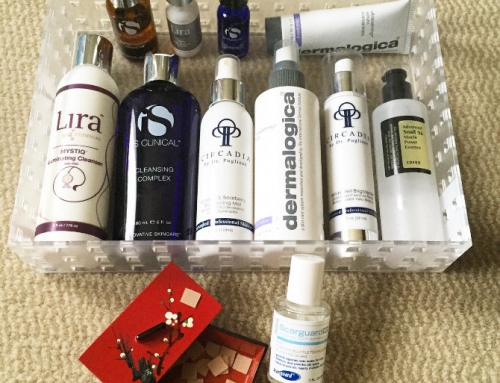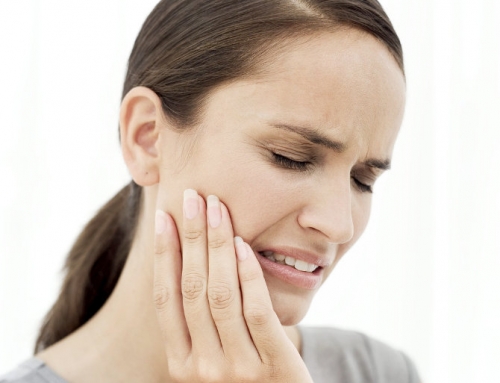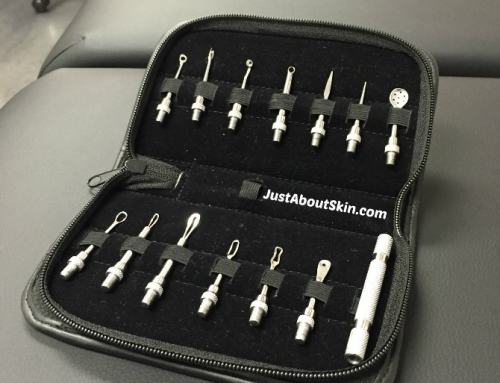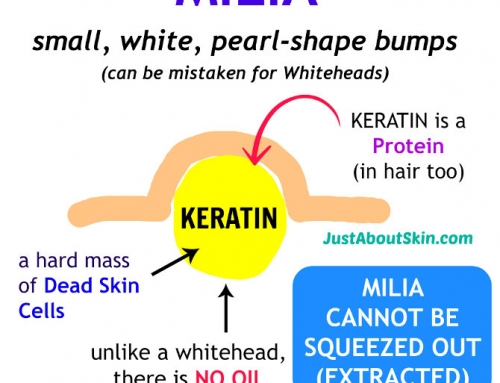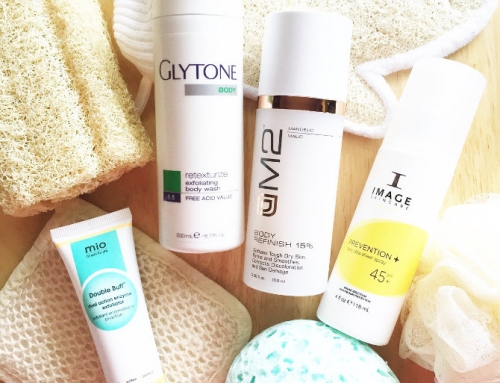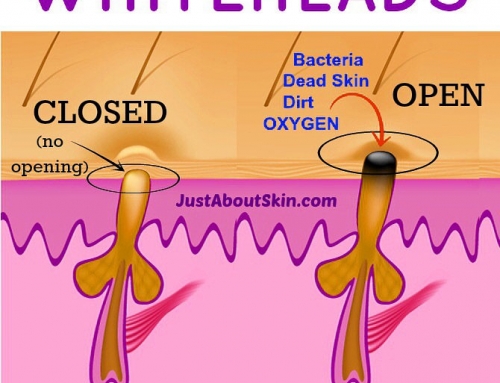Let’s go over some common acne mistakes today.
Mistake #1 – Squeezing or Popping
Don’t pick your face, no matter how tempting it is. There’s a really good reason why you hear this advice all the time. Squeezing, picking, or popping pimples will make them worse.
Inside every red, inflamed pimple is pus, which is infectious matter. Pus forms when the pore becomes inflamed by bacterial waste products.
Squeezing disturbs the pore and spreads the infection to the surrounding area. You could end up with more breakouts than you started with. Or you could make the inflammation worse, lengthening the healing time.
Picking may also cause scarring or worsen a scar that is already beginning to form.
Takeaway – Don’t Squeeze, Pick, or Pop!
Mistake #2 – Over-Cleansing
Cleansing twice a day is enough (AM and PM). Any more than that, you risk doing two things to your skin:
1.) Stripping your skin of essential lipids. Surfactants in cleansers pick up oil in addition to dirt and sweat. Removing too much oil disrupts the barrier function. (You can read more about the importance of lipids in your skin here.)
Find a cleanser that doesn’t leave your skin feeling tight or dry. If it feels that way, chances are there are strong sulfates in the cleanser which are too stripping.
2.) Signaling the sebaceous glands to produce MORE oil. If too much oil is removed from pores, the sebaceous glands respond by producing MORE oil to make up for the lack.
Don’t cleanse more than twice a day unless you workout. (After vigorous exercise, it is a good idea to wash the dirt and sweat away.)
To deal with a bothersome shine during the day:
- Blot your face with tissue or blotting paper to absorb excess oil.
- Rinse your face with cool water (with clean hands) and dry it with a paper towel. This will provide some temporary relief.
- Choose moisturizers and makeup with oil-absorbing ingredients.
You need to preserve your barrier function. This is one of the most important rules in skin care. A strong barrier function prevents many skin problems.
Takeaway – Don’t cleanse more than twice a day. (But do cleanse after sweaty exercise.)
Mistake #3 – Not Moisturizing Correctly, Especially If You Have Oily Skin
All skin needs hydration (water). Even if you have oily skin, you still need to moisturize.
The problem is with the word ‘moisturizer,’ which is an ambiguous term. There are two ways to moisturize skin:
1) help it retain water
2) give it oil
Everyone needs water. But not everyone needs oil.
So even if you have oily skin, you still need to give your skin water. We call this hydration.
Why is hydration needed if we drink plenty of water? Because water constantly evaporates from skin to the air. Especially in dry climates or a heated room. So skin needs constant water replenishment.
Skin care products often contain humectant ingredients to help skin hold onto water. This slows down evaporation. Skin is more moist if it holds onto water longer.
If you don’t hydrate your skin, it will get dehydrated, which compromises your barrier function and can lead to all sorts of skin issues, including more acne.
You can hydrate your skin by using a hydrating toner or an oil-free moisturizer. An oil-free product provides hydration without the lipids.
Oily Skin Still Needs Lipids
If you have oily skin, you might also consider using an face oil rich in omega-3 and omega-6, or adding a few drops of oil to an oil-free moisturizer.
- It may sound counter-intuitive to add oil to oily skin, but a face oil (made of omega-3 and omega-6 rich plant oils) gives skin essential fatty acids that strengthen the skin barrier.
- The oil your skin produces is sebum, which is made of different fatty acids (thicker) from those found in plant oils. When your skin is deprived of lipids (i.e. they have been stripped away by harsh cleansers or excessive cleansing), it compensates for the lack by producing more oil.
- Adding essential fatty acids to your skin keeps your barrier function in balance. When it is in balance, it is less likely to produce excess sebum. Try the oil drops to see if your skin become less oily. Excessively oily skin may be a sign that your barrier function is off balance. But don’t expect this to stop oily skin, which is a condition that is modulated by hormones.
There are many kinds of plant oils. Some have anti-microbial or anti-inflammatory properties that are good for oily or acneic skin. Tea tree oil is an example.
There are more and more face oils on the market now, and some are suitable for oily skin. Check the label but be prepared to do some experimentation. While an oil may claim to be suitable for oily skin, it may not work for your skin.
Note to People With Normal, Dry, or Combination Skin Experiencing Breakouts:
Acne and oily skin are often seen together. But you can still get acne if you have normal or dry skins. Adult acne is very common in women (even if there is no history of acne in puberty). This kind of acne is due to fluctuating hormones.
If you’re experiencing breakouts, use an oil-free moisturizer on the breakout areas. You can continue using your regular moisturizer on the rest of your face.
Takeaway – Don’t skip moisturizer.
Mistake #4 – Not Exfoliating
Acne is a 3-part problem (Bacteria + Oil + Excess Skin Cells) that leads to inflammation. Most people understand the need to get rid of bacteria and excess oil. But the third part – exfoliation—is often overlooked.
Exfoliation loosens dead skin cells and speeds up shedding. This accomplishes 3 things:
1) Excess sebum flows out more easily from the pore onto the surface of skin. If the surface is blocked with a layer of dead skin cells, sebum stays trapped inside the pore.
2) An exfoliating ingredient like Salicylic Acid ‘unroofs’ the plug, ‘sweeps’ inside the clogged pore, and loosens the plug.
3) Microcomedones are constantly forming inside the lower part of the pores. These eventually become comedones, papules, or pustules. An AHA flushes out these pores, hindering microcomedones from developing further.
If you experience persistent breakouts or blackheads, use an exfoliating cleanser, toner, or serum every day or every few days. That will help keep your pores clear. Regular exfoliation will clear out the dead cells and solidified sebum that build up inside a pore.
There are other exfoliating ingredients besides salicylic acid that are good for acne. Glycolic acid works well besides it penetrates the deepest of all the AHA’s, but it’s also the most irritating. (Not recommended for sensitive skin though.) Mandelic acid is another good one – a gentle AHA with anti-bacterial properties (good for any skin type).
Takeaway – Exfoliate with Salicylic Acid or an Alpha Hydroxy Acid such as Glycolic Acid or Mandelic Acid.
Mistake #5 – Using Comedogenic Skin Care Products or Makeup
Skin care products and makeup may contain comedogenic ingredients, which are fatty emollients or oily ingredients. They clog pores and make existing acne worse. Their effect on skin is the same as too much sebum being produced. Additionally, some of these ingredients are irritating to the pore walls, which increases the inflammation.
Comedogenic ingredients are often found in skin care products for dry or mature skin and makeup foundation. But they can be in any product. You need to look at the ingredient list carefully or look for ‘non-comedogenic’ on the label. Here is a list of comedogenic ingredients.
Takeaway – Read the ingredient label!

